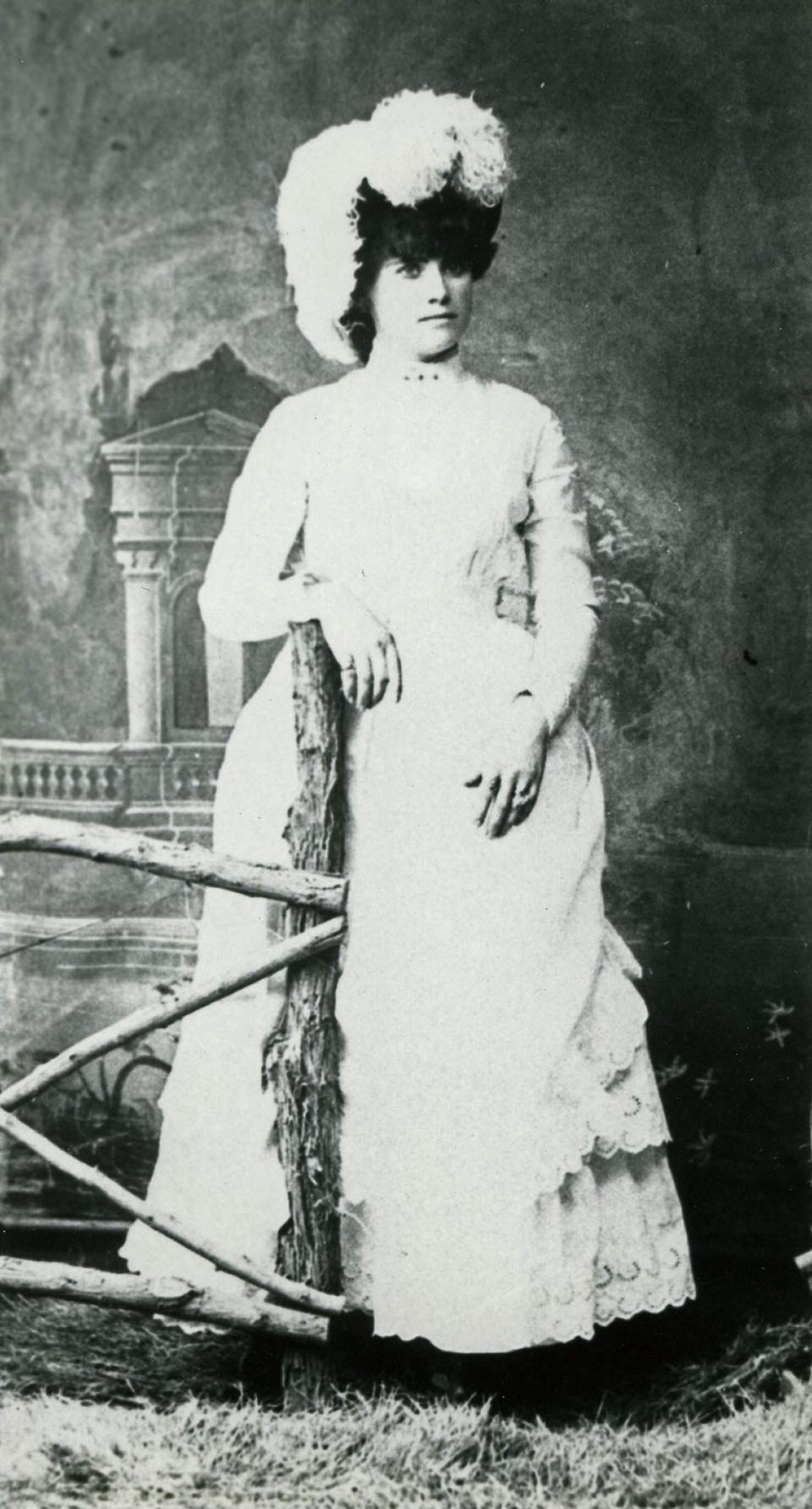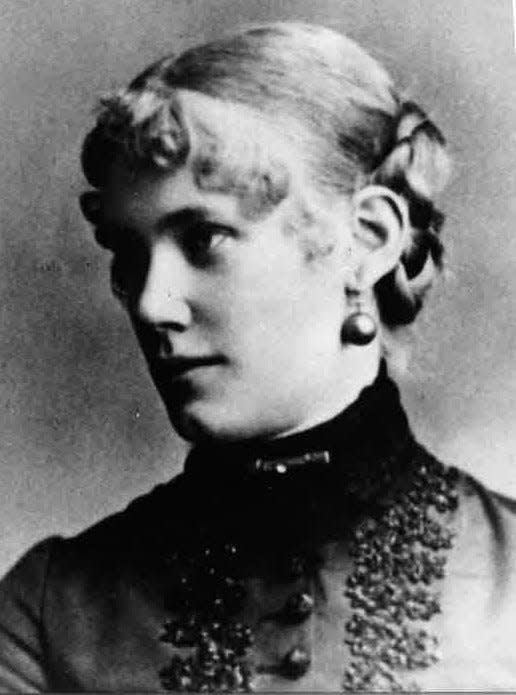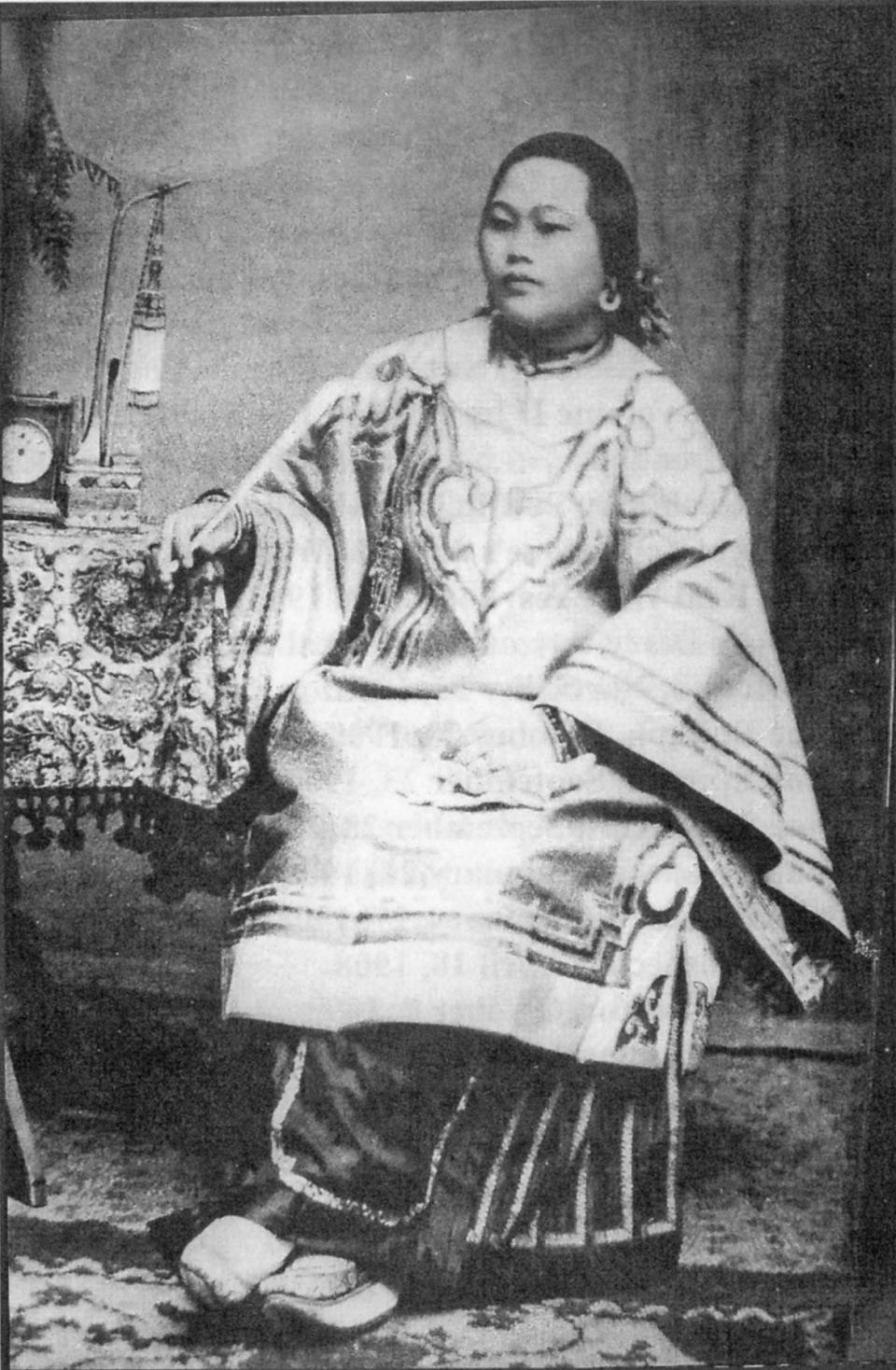8 influential women who changed the face of Arizona: How they made their marks on history
- Oops!Something went wrong.Please try again later.
- Oops!Something went wrong.Please try again later.
Men may have been at the forefront of the Old West, whether ranching or mining or dealing with the law (be it enforcing it or breaking it).
But women were hardly limited to staying home birthing babies and fretting about menfolk, despite what we’ve learned from the John Wayne Academy of Western movies.
Many women were blazing new trails in a harsh landscape, achieving the kind of success that would have carried a man into the annals of history. Instead, their achievements often have been overlooked or forgotten.
Here are eight Arizona women of the Old West everyone should know about.
More: These inspiring Hispanic Americans changed the face of Arizona
Eulalia Elias, 1788-1865
In a field dominated by men, Elias stood apart not just as a woman but as a leader. She managed her family’s vast ranching empire that spread over thousands of acres in Sonora, Mexico, and Arizona.
MORE THINGS TO DO: For restaurant reviews, travel tips, concert picks and more, subscribe to azcentral.com.
Elias was in her early 40s when her family moved to the southern Arizona Territory in 1827, purchasing more than 130,000 acres centering along Babocomari Creek. She oversaw the family’s fortified hacienda, hidden behind 15-foot walls necessitated by the ongoing Apache wars, and helped her brother Juan run the family ranch and its more than 40,000 head of cattle.
The ranch thrived for 16 years under Eulalia Elias’s management. But life was difficult on the frontier, and frequent skirmishes with the Apache eventually took their toll.
By the 1840s, three of her brothers had died, two at the hands of Apaches. Elias eventually moved back to her hometown of Arizpe, Sonora, where she died in 1865 at the age of 79.
More: Arizona's Western history museums bring the past to life
Josephine Brawley Hughes, 1839-1926
On the last leg of her journey west in 1872, the Pennsylvania native and teacher carried a rifle in one arm and her infant in the other as she rode a stagecoach to Tucson. That speaks to her strong will and forceful personality, traits that served her well as she fought for various causes.
Not long after arriving in Tucson, Hughes — who was married to an influential attorney — became the territory's first female public school teacher and soon opened the first school for girls. She joined with several women to organize the first Protestant church in the Arizona Territory, opened in 1879.
When her husband Louis owned and managed the Arizona Daily Star, the couple worked together to craft a newspaper that opposed gambling and capital punishment and pushed for temperance. When her husband served as territorial governor in the 1880s and '90s, Hughes continued to manage the paper, the only woman doing so at the time.
In 1912, her son John was elected senator to Arizona’s first state legislature. He would eventually introduce a resolution for a constitutional amendment giving women the vote. The initiative was approved by voters in November 1912.
Hughes died April 22, 1926, in Hermosa Beach, California, at the age of 86.
Nellie Cashman, 1845-1925

The Irish native had a head for business and prospecting as she traveled the American West in the late 1800s, but what she became notable for was her compassion.
Cashman spent much of her life chasing precious ore, following news of the latest strikes and traveling hundreds of miles to be a part of treasure hunt.
She opened and ran many boarding houses and restaurants, and was known for aiding miners down on their luck. While prospecting in British Columbia in 1874, she heard of miners struggling to survive in a snow-laden mining camp. Cashman joined a small group that came to their rescue, tugging 1,500 pounds of food and supplies.
Her interests in gold, silver and adventure brought Cashman to Tucson in 1877, where she opened a successful restaurant that established her reputation as a smart businesswoman.
Over the next 21 years, Cashman would open and run numerous restaurants and businesses in Tucson, Tombstone and Bisbee, but it was her devotion to charitable causes and people in need that earned her the devotion and respect of residents.
In 1898, Cashman joined the Klondike gold rush, a successful foray that eventually helped fund a new hospital in Fairbanks, before the establishment of the Territory of Alaska. In winter, she’d often return to Arizona to spend time with family. She died Nov. 24, 1925, in a British Columbia hospital she helped establish a half-century earlier.
More: Arizona's mining history: Danger for many, riches for a few
Nampeyo, 1857-1942
One of the Hopi people’s most accomplished and talented potters, Nampeyo found her early inspirations among shards that were centuries old.
Nampeyo, born in Hano, a village on First Mesa, found beauty in a Hopi style of pottery that had all but disappeared. Intrigued by the colors and patterns she saw on shards from the 14th, 15th and 16th centuries, she incorporated the style as she established herself among the Hopis’ most eminent potters.
By the late 1870s and early 1880s, she was selling her creations at the Keams Canyon trading post, her distinctive pots catching the eyes of buyers.
Demand increased as the territory was opened to travelers with the completion of the Santa Fe Railroad across Arizona in 1881.
By the late 19th century, Nampeyo was incorporating tan, red and black, using colors and tints found in nature. She’d be credited with leading a renaissance of modern Hopi pottery and is still considered one of the most influential Hopi artists.
Nampeyo shared her talents through demonstrations. In 1905 and 1907, she practiced her craft at the Hopi House on the South Rim of Grand Canyon. The gallery and gift shop was built by the Fred Harvey Company to sell Hopi wares to the increasing number of travelers descending upon the natural wonder.
Today, Nampeyo pots can fetch tens of thousands of dollars at auction.
Sarah Herring Sorin, 1861-1914

As the first woman admitted to the Arizona Territory Bar, Sorin’s career choice was no surprise. She was born in 1861 to an accomplished attorney and devoted much of her life to matters of the court.
Two years after she was admitted, Sorin joined her father in heading up a law firm in Tombstone. The two worked together from 1894 to 1896, before Sorin married and moved to Tucson in 1898.
Sorin eventually specialized in mining law, traveling around Arizona representing mining companies, including Old Dominion Copper Co. and the United Globe mines.
Sorin was representing mining concerns when, in 1913, she became the first woman to argue before the Supreme Court without being accompanied by a male attorney. She won the case involving the disputed ownership of a mine.
In 1914, she died of influenza at the age of 53, but her name lives on. The Arizona Women Lawyers Association bestows the Sarah Herring Sorin Award to the member who supports the advancement of women in the legal profession.
More: Arizona's mining history: Danger for many, riches for a few
Frances Lillian Willard Munds, 1866-1948
Given the fact that her maternal grandfather was a member of the Lewis and Clark expedition, Munds seemed destined to blaze new trails.
Her involvement in the suffrage movement at the turn of the 20th century led her into politics, where she became Arizona’s first woman state senator (and only the second woman in the U.S. elected to a state senate).
Munds was 19 in 1885 when she joined her parents in Prescott, where her father was a successful rancher. She taught school and eventually immersed herself in the suffrage movement.
In 1898 Munds was elected secretary of the Territory of Arizona Women Suffrage Organization and spent years lobbying politicians to grant women the vote.
Not long after Arizona received statehood in 1912, Munds spearheaded a petition drive to put women’s suffrage to a vote, where it was overwhelmingly approved by voters. Arizona was one of 15 states to give women the vote before the 19th Amendment was ratified in 1920.
In 1914, Munds was among seven Yavapai County candidates for two state senate seats. She finished on top, more than 600 votes ahead of the second-place finisher. Munds remained active in politics much of her life. She was 82 when she died in 1948.
Sing Choy (China Mary), 1839-1906

Typically dressed in fine silk, Sing Choy (known by the white populace as China Mary) was the unofficial leader of Tombstone's Chinese community in the 1880s. Little got done without her say-so.
Choy was the liaison between the Chinese and white communities. She supplied labor to white businessmen, guaranteeing the work of her laborers and making up losses for anything they might steal.
In return, Choy took a cut of their pay, a lucrative enough business to allow her to invest in laundries and restaurants. She also ran opium dens and gambling halls, and was said to have provided Chinese prostitutes.
Even as she ran businesses that were questionable (though acceptable at the time), Choy managed a successful general store. Over the years she became known as a smart and respected businesswoman known for her honesty and trustworthiness. She was even known to help out a miner down on his luck.
When Choy died from a heart attack in 1906, most of Tombstone showed up to bid her farewell. Her grave marker was among the most prominent in Boothill Cemetery.
Pearl Hart, 1871-??
Though Pearl Hart was just 5-foot-3, the diminutive Canadian made a big mark on the Old West thanks to a desperate act that led to national attention.
In the spring of 1899, Hart lived in Phoenix but "did not travel in the best society and suddenly dropped out of sight," the Arizona Republican reported.
A few months later, the stage running between Globe and Florence was robbed and passengers reported that a woman held a gun on them while her male partner took money and watches.
"The story was hardly given credence," the Republican said, but when a sheriff's posse caught up with the two a few days later and her involvement was confirmed, the female bandit made headlines.
Hart was eventually taken to Tucson and detained in a room ill-equipped to hold anyone determined to get out. She cut through the lath and plaster to escape, only to be caught two weeks later in New Mexico.
In November 1899, Hart was sentenced to five years and served her time at the infamous Yuma Territorial Prison, where she received preferential treatment from the warden and occupied a relatively spacious cell with a view and a yard.
Hart received a pardon in 1902 and told reporters she planned to pursue acting. She traveled east and was said to have appeared in a handful of vaudeville shows.
Hart quickly faded from the public eye, as did the details of her later life. Even the date of her death isn't clear.
Sources: Marshall Trimble, Arizona Women's Hall of Fame. Arizona Republic archives.
This article originally appeared on Arizona Republic: Famous women in Arizona history: 8 who changed the state

